-
Uranium mining debate divides Virginia
In Virginia a fight has begun over whether to drill for uranium. Some feel the drilling, which would create about 1,000 jobs and bounty of tax revenue in addition to nuclear fuel, is important for a state whose main industries, such as tobacco and textiles, are failing. Those who oppose the drilling fear the contamination of drinking water in case of an accident, and a stigma from uranium which would deter people and businesses from moving to the area.
-
-
Thorium holds promise of safer, cleaner nuclear power
Thorium as nuclear fuels has drawbacks, but its main advantage includes generating far less toxic residue. The majority of the mineral is used during the fission process, and it can burn existing stockpiles of plutonium and hazardous waste, saving the need to transport it and bury the waste in concrete. If thorium becomes available as a source of energy in the future, the world will rely less on coal and gas, and wind turbines will become a thing of the past. The risk of a global energy crunch will decrease considerably.
-
-
Revealing full-body scanners to be removed from airports
One of the more controversial post-9/11 security devices, the ubiquitous and uncomfortably intrusive full-body scanners, will be removed from service by the Transportation Security Administration (TSA). On Friday, the agency announced it would begin to remove the scanners from U.S. airports this summer. The anatomically revealing backscatter scanners are being replaced by the ore discreet millimeter wave devices.
-
-
Metamaterial sensor improves security, collision avoidance
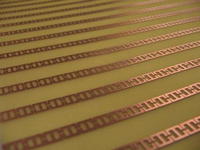
Engineers have developed a novel sensor which is more efficient, versatile, and cheaper for potential use in such applications as airport security scanners and collision avoidance systems for aircraft, cars, or maritime vessels.
-
-
Neutralizing the effects of lethal chemical agents
Organophosphorus agents (OPs) are used both in farm pesticides, and by terrorists and rogue states. About 200,000 people die each year across the world from organophosphorus agents (OP) poisoning, through occupational exposure, unintentional use, and misuse, mostly in developing countries like India, Pakistan, and Sri Lanka and through deliberate terrorist activities. OPs include compounds like Tabun, which was developed in 1936 by German scientists during the Second World War, Sarin, Soman, Cyclosarin, VX, and VR. Researchers develop an enzyme treatment which could neutralize the effects of OPs.
-
-
U.K. revises nuke emergency plans post-Fukushima
The Sizewell nuclear power station in Suffolk, England, was decommissioned in 2006, but after the 2011 Fukushima disaster, the Suffolk authorities thought there was a need to upgrade the emergency plans for the people living around the plant. There are disagreements, however, over the radius of the emergency zone around the plant, and how many people should be included i evacuation plans and given potassium iodide tablets in the event of a radiation leak.
-
-
Tiny helpers: Atom-thick flakes help clean up radioactive waste, fracking sites
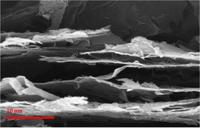
Graphene oxide has a remarkable ability quickly to remove radioactive material from contaminated water. Researchers determined that microscopic, atom-thick flakes of graphene oxide bind quickly to natural and human-made radionuclides and condense them into solids. The discovery could be a boon in the cleanup of contaminated sites like the Fukushima nuclear plants, and it could also cut the cost of hydraulic fracturing (“fracking”) for oil and gas recovery and help reboot American mining of rare earth metals.
-
-
Airborne pods tracing nuclear bomb’s origins
If a nuclear device were to unexpectedly detonate anywhere on Earth, the ensuing effort to find out who made the weapon probably would be led by aircraft rapidly collecting airborne radioactive particles for analysis; relatively inexpensive UAVs, equipped with radiation sensors and specialized debris-samplers, could fly right down the throat of telltale radiation over a broad range of altitudes without exposing a human crew to hazards
-
-
Portable X-ray source offers a mobile terrorism prevention tool
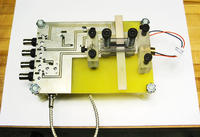
The hand-held scanners, or tricorders, of the Star Trek movies and television series are one step closer to reality now that a engineers have invented a compact source of X-rays and other forms of radiation; the radiation source, which is the size of a stick of gum, could be used to create inexpensive and portable X-ray scanners for use by doctors, as well as to fight terrorism and smuggling and aid exploration on this planet and others
-
-
A dandelion-shaped device to help in demining operations
Decades of war have left land mines buried all over the Afghan countryside; they continue to go off, killing and maiming hundreds of innocent people every year; last year alone, more than 812 people were wounded or killed in Afghanistan because of mines left behind after the armies retreated; two Afghan inventors designed a dandelion-like device for demining operations
-
-
TSA hits new record in gun collection at airports in 2012

The Transportation Security Administration (TSA) set a new record by confiscating 1,500 weapons in 2012, with 1,295 of the weapons being loaded; most of the confiscated weapons at airports are guns, but TSA has also caught passengers trying to board planes with grenades, stun guns, axes, and throwing stars; one passenger tried to board a plane carrying a bazooka, and another passenger was trying to bring a rocket launcher on board
-
-
Helicopter monitors radiation levels in Washington, D.C.
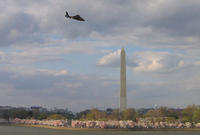
For the last week, a National Nuclear Security Administration (NNSA) helicopter has been flying over Washington, D.C., measuring naturally occurring radiation levels; the purpose is to establish a baseline of radiation levels so that abnormal spikes – occurring, for example, as a result of exploding a dirty bomb — may be readily detected
-
-
Army engineers develop new roadway threat detection system
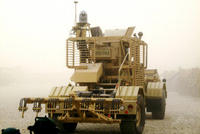
Explosives along roadways remain an unrelenting hazard for deployed soldiers; U.S. Army engineers have developed a system for detecting possible threats by identifying potential threat locations on unimproved roads; the system can perform region of interest cueing of threats at greater standoff distances, which can be further interrogated by the radar as the vehicle gets closer to the threat
-
-
U.S. cuts budget for nuclear monitoring at foreign ports
In 2003 the United States decided to install radiation detection equipment in 100 large ports around the world, and train local personnel in using the equipment, so that ship containers could be scanned for nuclear material before the ship left for the United States; so far, equipment has been deployed in forty-two ports; after GAO criticism of the quality of the scanning equipment and of lack of coordination between two similar container scanning programs, the National Nuclear Security Administration’s 2013 budget will be cut by 85 percent, and further installations will be canceled
-
-
New, quick way to ID people exposed to dirty bomb, radioactive radiation
Research conducted by scientists from the Berkeley Lab could lead to a blood test that detects if a person has been exposed to radiation, measures their dose, and separates people suffering from inflammation injuries — all in a matter of hours
-
More headlines
The long view
Keeping the Lights on with Nuclear Waste: Radiochemistry Transforms Nuclear Waste into Strategic Materials
How UNLV radiochemistry is pioneering the future of energy in the Southwest by salvaging strategic materials from nuclear dumps –and making it safe.
Model Predicts Long-Term Effects of Nuclear Waste on Underground Disposal Systems
The simulations matched results from an underground lab experiment in Switzerland, suggesting modeling could be used to validate the safety of nuclear disposal sites.
